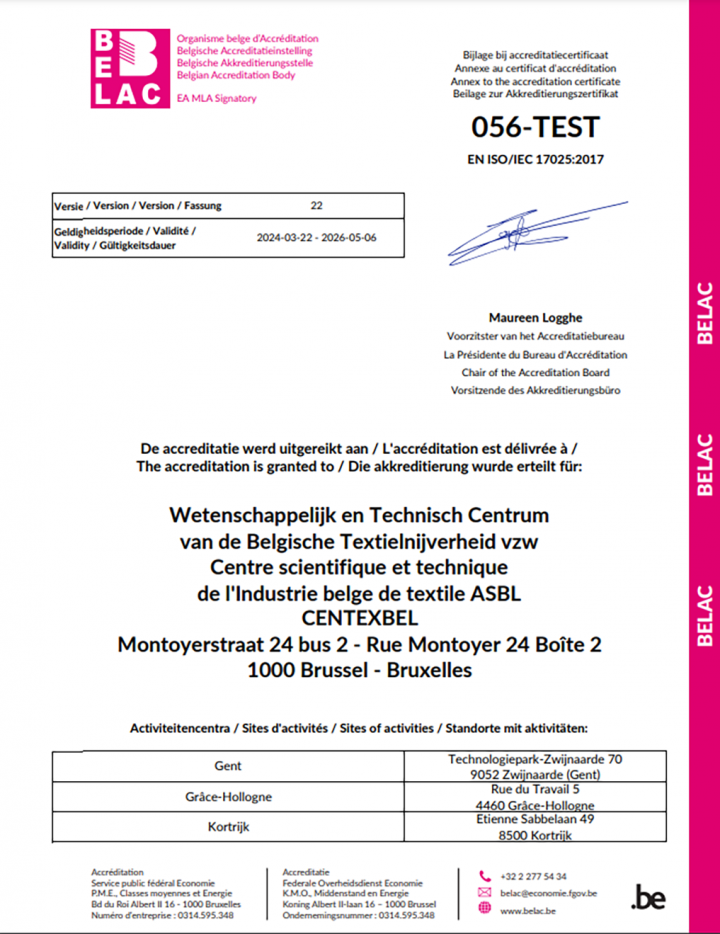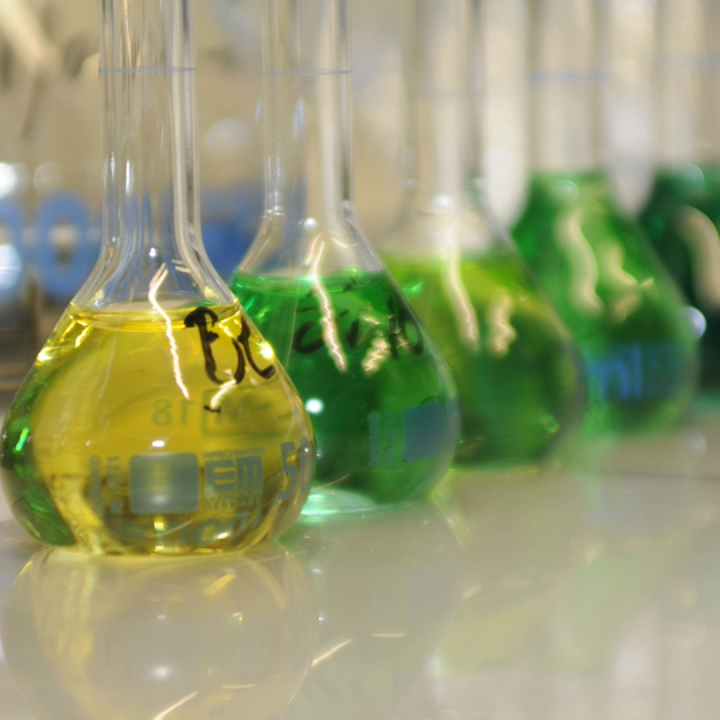NEW: Flexible Scope
During the last BELAC audit, we succeeded in obtaining the extension of the 056-TEST scope to include a section of measurement techniques under 'flexible scope'. This allows us to perform certain new tests or standards under accreditation by self-approval.
Download the pdf to consult the groups of tests and associated products and measured properties covered by the flexible scope

Testing of textiles and plastics - from raw material to finished product - by an independent and accredited laboratory not only results in an important competitive advantage but is also proof of one's respect of consumer safety and well-being.
Measure what is measurable, and make measurable what is not so. Galileo Galilei
The BELAC EN ISO/IEC 17025 accredited Centexbel laboratories are known for their:
- vast testing offer including several tests that are unique in Europe
- professional advice
- thorough knowledge and follow-up of international standardisation and legislation
- continuous updating and expansion of testing equipment, testing methods, and database of chemical compounds
- accredited tests involving an annual severe audit of all our laboratories
- conditions in conformity with the market
Department of Mobility & Public Works (Flanders/BE)
Lab addresses
Technologiepark 70 - BE 9052 Zwijnaarde
- PPE
- Carpets
- Community masks
- Other textiles for chemical, physical and burning behaviour test
Rue du Travail 5 - BE 4460 Grâce-Hollogne
- Medical devices and masks
- Materials for microbiological tests
- Laser resistance, electrical conductivity, thermo-physiological comfort tests, etc
Etienne Sabbelaan 49 - BE 8500 Kortrijk
- Plastics: virgin and recycled granulates, plastic products






